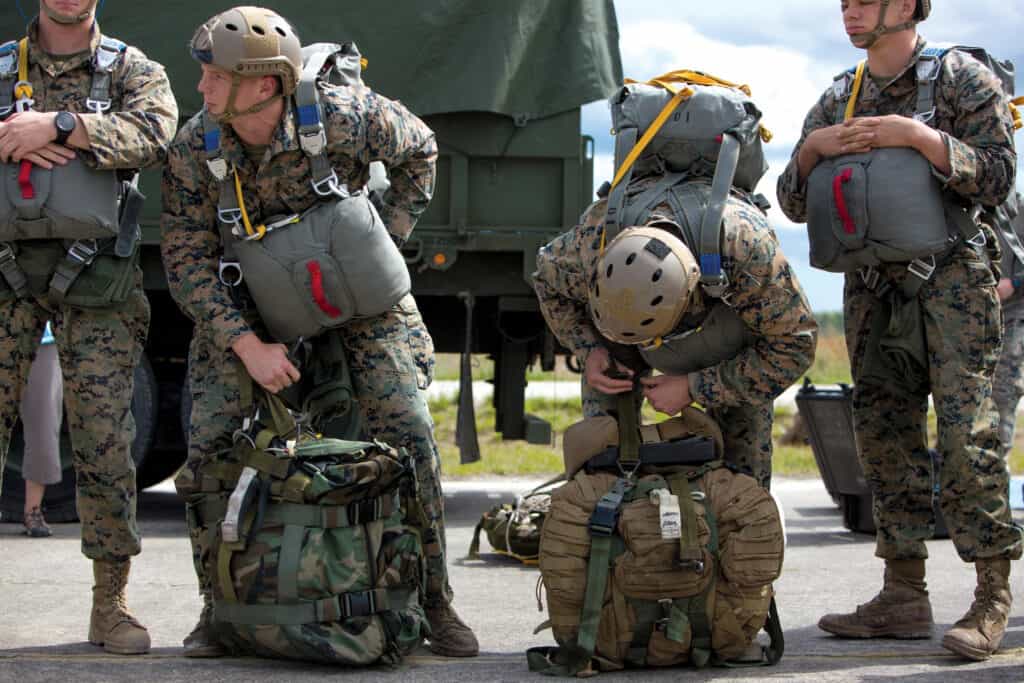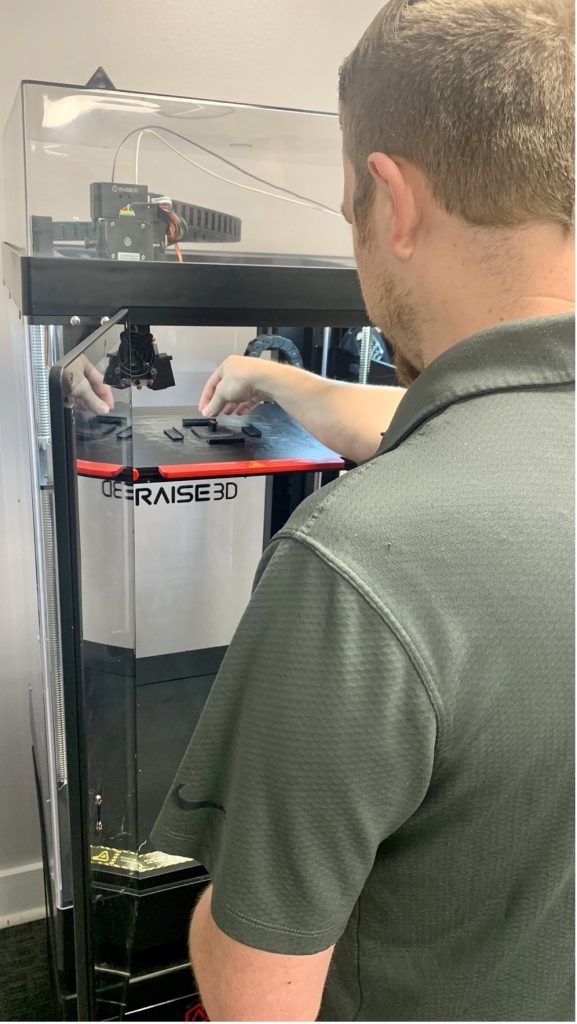In 1881, Englishman George J. Capewell founded the Capewell Horse Nail Company in Hartford, Connecticut. His patented automated machines made Capewell the only company in the world that could mass produce horseshoe nails in an era when horses powered transportation worldwide. For decades, the company grew and prospered based on this single high-demand product that no one else could match.
Over the last 50 years or so, manufacturing — or Industry 4.0 as it’s called today — has transformed into a highly complex ecosystem characterized by the integration of digital technologies into the manufacturing process. Industry 4.0 is the fourth industrial revolution, a transformative period that is changing the way businesses operate. Its growth is being driven by the increasing adoption of smart technologies, the internet of things (IoT), and automation.
In this article, we’ll take a closer look at the top technology enhancements impacting the manufacturing sector.
The Key Characteristics of Industry 4.0
Today, the most sophisticated manufacturers are embracing the ongoing transformation of industry through the use of a variety of digital technologies. Some technologies, such as advanced automation and enterprise resource planning software, are more mainstream. Whereas others, like artificial intelligence and digital twin technology, are not yet widely adopted, but on the horizon.

By embracing modern manufacturing technology, Capewell has been able to expand its survivability and aerial delivery solutions into a broad range of products that keep service men and woman safe and increase mission success.
However, manufacturers like Capewell must continue to embrace technology, like the kind that’s described below, to improve flexibility, increase response times, and decrease production costs.
Computer-Aided Design (CAD) and Computer-Aided Manufacturing (CAM)
CAD and CAM software have transformed the manufacturing industry by allowing for the design and production of complex parts and products with greater precision and speed. CAD software is used to create 3D models of tactical gear components, such as body armor plates, quick release latches, or helmet shells. These models can be modified quickly and easily to test different configurations and materials, allowing engineers to optimize the design for performance and manufacturability.
Once the design is complete, CAM software is used to automate the production process by generating instructions that control the machines’ movements, allowing for precise and repeatable production of complex parts.
CAD and CAM software can also be used to create rapid prototypes of tactical gear or components. The integration of these two technologies enables engineers to design products in a virtual environment and then seamlessly transfer the design data to the manufacturing process. This not only reduces the risk of errors but also increases the efficiency of the design and production process.

Digital Twin Technology
Digital twin technology, while not yet widely adopted in the manufacturing sector, goes beyond CAD to create a virtual representation of the entire product lifecycle. A digital twin is a digital replica of a physical asset or system, such as a piece of machinery, a building, or an entire production line. It’s created using real-time data from sensors, machines, and other sources, and is used to monitor and optimize the performance of the asset or system throughout its entire lifecycle.
Digital twin technology enables engineers and manufacturers to simulate and test different scenarios before making any changes to the physical system. For example, in the future, it can be used to design military tactical gear like protective vests by creating a virtual model of the entire product lifecycle such as the design process, materials used, manufacturing processes, and testing procedures. This can be combined with simulation software to predict how the vest will perform under different conditions, such as temperature, humidity, and impact forces.
In addition, digital twin technology can also be used to simulate the manufacturing process of the vest, including the use of automated sewing machines and other equipment in order to identify potential bottlenecks or issues in the manufacturing process before they occur.
Robotics and Advanced Automation
The use of industrial robots has led to increased automation and efficiency in manufacturing processes, especially in tasks that are repetitive, dangerous, or require high precision. Robots can perform tasks faster, more accurately, and for longer periods without the need for breaks. They are also capable of working in hazardous environments, reducing the risk of injuries to human workers.
Traditionally, the production of protective vests and other soft goods used in military tactical gear has been a labor-intensive process that involves manual cutting, sewing, and finishing. This process is slow and can result in inconsistencies in the final product.
With robotic and advanced sewing automation, manufacturers like Capewell improve the production of protective vests, harnesses, and other sewn goods used by the military in several ways:
- Allows for the quicker ramp up times and faster production of large quantities of sewn goods which can be especially important in military applications where large numbers are needed quickly
- Results in more consistent, high-quality products than manual sewing, ensuring that each product meets the same quality standards, resulting in fewer defects and a more uniform finished product
- Creates more opportunities to customize products to specific customer needs such as modifying protective vests, carriers or harnesses to include custom pockets or straps designed to fit a specific set of gear
- Reduces labor costs associated with manual sewing
- Allows manufacturers like Capewell to produce a wide range of products, from small tactical pouches to large combat aviation vests and harnesses, as well as respond quickly to changes in demand or shifts in production needs.

Additive Manufacturing (3D Printing)
Additive manufacturing, also known as 3D printing, is beginning to transform the manufacturing industry by enabling the production of complex geometries and customized products with minimal waste, reduced lead times, and increased design flexibility. With 3D printing, manufacturers can create prototypes more quickly and efficiently, using a range of materials that can mimic the strength and durability of the final product. Today, these prototypes are often more precise and accurate than those made using traditional methods.
As product specifications are becoming increasingly more rigorous — such as the need for lighter, yet more durable protective vests as an example — manufacturers like Capewell are beginning to experiment with 3D printing to quickly create prototypes of products such as protective vests, that incorporate lightweight and strong materials such as Kevlar or carbon fiber. And because a 3D printer can create complex shapes and structures that are impossible to achieve using traditional manufacturing methods, greater customization and precision can be achieved upfront in the design process.

Artificial Intelligence (AI) and Machine Learning (ML)
While adoption of artificial intelligence and machine learned software is in its infancy, this technology has the potential to significantly improve the manufacturing and production of tactical military gear.
AI and ML algorithms can analyze vast amounts of data generated during the manufacturing process to identify patterns and predict opportunities for improvement before an issue arises — by optimizing production processes, reducing errors, and improving quality control.
Another way AI can improve the manufacturing of tactical gear is through the use of computer vision technology to detect product defects on the production line. AI-powered cameras can be used to capture images of produces as they are being produced, and then analyze those images to identify defects, such as cracks, tears, deformities, or inconsistencies. By detecting these defects early in the production process, manufacturers can reduce waste and improve the quality of the final product.
Additionally, using predictive modeling software, AI and ML can be used to forecast demand for different products, allowing manufacturers to plan for different scenarios and adjust production schedules or inventory levels accordingly. This can help manufacturers reduce waste and improve efficiency while ensuring that they are able to meet customer demand.
The Importance of ERP Systems in Industry 4.0
ERP (Enterprise Resource Planning) systems are a critical component of Industry 4.0. These systems are designed to integrate and streamline business processes across different departments and functions, providing a holistic view of the organization’s operations.
ERP systems are essential for managing the data generated by Industry 4.0 technologies and enable businesses to collect and analyze data from various sources, providing real-time insights into production processes and supply chain management. This real-time data is critical for optimizing processes, reducing downtime, and improving quality control.
Moreover, ERP systems help manufacturers to manage their resources efficiently, including raw materials, production equipment, and human resources. Manufacturers can track inventory levels, manage orders, and schedule production runs. This information is essential for optimizing production processes and ensuring that products are delivered to customers on time and within budget.
ERP systems also provide a platform for collaboration between different departments and functions within an organization. They enable cross-functional communication, allowing teams to share information and work together towards common goals. This collaboration is essential for the successful implementation of Industry 4.0 principles, which require cooperation and coordination between different areas of the organization.
At Capewell, we use Infor Visual manufacturing ERP software, a comprehensive system designed to provide increased visibility and control over production and material processes. This software provides a range of features, including production and material visibility, scheduling optimization, and performance automation, all of which are designed to increase throughput and productivity.
A History of Innovation Capable of Keeping Up with Industry 4.0
Capewell has come a long way since its early days of producing horseshoe nails, but what hasn’t changed is the Company’s commitment to innovation. Over the years, Capewell has evolved with the times, making investments in infrastructure and technology to stay ahead of the curve and meet the demand for high quality, custom products that can be manufactured at scale.
Our operational procedures combine the perfect mix of scale and adaptability. This means we’re big enough to solve the most complex survivability and aerial delivery needs, but small enough to listen to our customers’ needs and respond with rapid precision that’s unmatched in the industry.
Today, Capewell is a leading designer, manufacturer, and distributor of survivability and aerial delivery solutions for the defense community. With locations in the United States and Europe, Capewell supplies the Department of Defense, Allies, and Partners around the world with the most innovative, most effective custom-engineered solutions capable of withstanding today’s dangerous operating environments.

